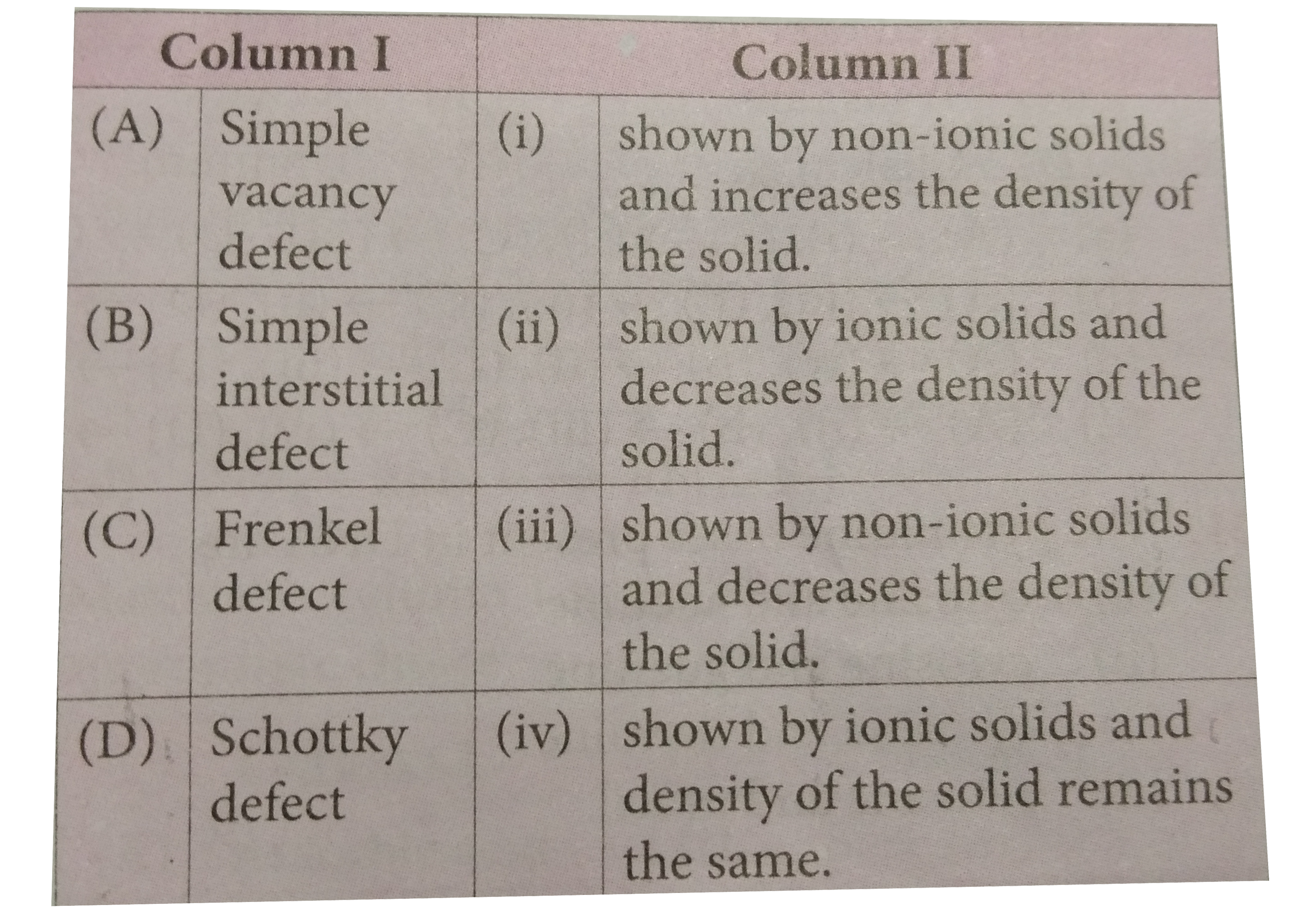match the defects given in Column I with the statements in given column II.
Column I Column II(i) Simple vacancy defect (a) shown by non- ionic solids and increases density of the solid(ii) Simple intersitial defect (b) show by ionic solids and decreases density of the solid(iii) Frenkel defect ( c) shown byy non-ionic solids and density of the solid decreases(iv) Schottky defect (d) Shown by ionic solids and density of the solid remains the same
The correct Answer is:(i)→b,©,(ii)→c,d(iii)→c,e(iv)→a,b
Topper's Solved these Questions
Similar Questions
Knowledge Check
Match the defects gives in column I with statements given in column II and mark the appropriate choice.
 AA→iv,B→iii,C→ii,D→iBA→iii,B→iv,C→I,D→iiCA→iii,B→I,C→iv,D→iiDA→I,B→iii,C→iv,D→ii
AA→iv,B→iii,C→ii,D→iBA→iii,B→iv,C→I,D→iiCA→iii,B→I,C→iv,D→iiDA→I,B→iii,C→iv,D→iiMatch the defects gives in column I with statements given in column II and mark the appropriate choice.
 AA→iv,B→iii,C→ii,D→iBA→iii,B→iv,C→I,D→iiCA→iii,B→I,C→iv,D→iiDA→I,B→iii,C→iv,D→ii
AA→iv,B→iii,C→ii,D→iBA→iii,B→iv,C→I,D→iiCA→iii,B→I,C→iv,D→iiDA→I,B→iii,C→iv,D→iiDue to Frenkel defect, the density of the ionic solids
AIncreasesBDecreasesCDoes not changeDChanges
match the types of defect given in column I with the statement given in column II.

View SolutionMatch the defects given in Column I with the statements in given Column II.
Column I
(i) Simple vacancy defect
(ii) simple interstitial defect
(iii) Frankel defect
(iv) Schottky defect
Column -II
(a) Shown by non-ionic solids and increases denstiy of the solid.
(b) Shown by ionic solids and decreases density of the solid.
(c) shown by non ionic solids and density of the solid decreases.
(d) Shown by ionic solids and density of the solid remains the same.
View SolutionMatch the types of defect given in Column I with the statement given in Column II.
Column I Column II (i) Impurity defect (a) NaCl with anionic sites called F-centres (ii) Metal excess defect(b) FeO with Fe3+(iii) Metal deficiency defect (c) NaCl withSr2+ and some cationic sites vacant
View SolutionMatch the cystalline solids in Column-I with packing arrangement in Column-II:

View SolutionDue to Frenkel defect, the density of the ionic solids
View Solution
